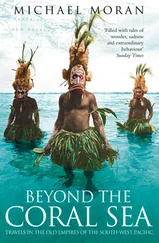It may be observed farther, that, when we reflect on the numerous analogies which exist between the properties of plants and their external forms, we are surprised to find qualities eminently febrifuge in the bark of trees belonging to different genera, and even different families.* (* It may be somewhat interesting to chemistry, physiology, and descriptive botany, to consider under the same point of view the plants which have been employed in intermittent fevers with different degrees of success. We find among rubiaceous plants, besides the cinchonas and exostemas, the Coutarea speciosa or Cayenne bark, the Portlandia grandiflora of the West Indies, another portlandia discovered by M. Sesse at Mexico, the Pinkneia pubescens of the United States, the berry of the coffee-tree, and perhaps the Macrocnemum corymbosum, and the Guettarda coccinea; among magnoliaceous plants, the tulip-tree and the Magnolia glauca; among zanthoxylaceous plants, the Cuspare of Angostura, known in America under the name of Orinoco bark, and the Zanthoxylon caribaeum; among leguminous plants, the geoffraeas, the Swietenia febrifuga, the Aeschynomene grandiflora, the Caesalpina bonducella; among caprifoliaceous plants, the Cornus florida and the Cuspa of Cumana; among rosaceous plants, the Cerasus virginiana and the Geum urbanum; among amentaceous plants, the willows, oaks, and birch-trees, of which the alcoholic tincture is used in Russia by the common people; the Populus tremuloides, etc.; among anonaceous plants, the Uvaria febrifuga, the fruit of which we saw administered with success in the Missions of Spanish Guiana; among simarubaceous plants, the Quassia amara, celebrated in the feverish plains of Surinam; among terebinthaceous plants, the Rhus glabrum; among euphorbiaceous plants, the Croton cascarilla; among composite plants, the Eupatorium perfoliatum, the febrifuge qualities of which are known to the savages of North America. Of the tulip-tree and the quassia, it is the bark of the roots that is used. Eminent febrifuge virtues have also been found in the cortical part of the roots of the Cinchona condaminea at Loxa; but it is fortunate, for the preservation of the species, that the roots of the real cinchona are not employed in pharmacy. Chemical researches are yet wanting upon the very powerful bitters contained in the roots of the Zanthoriza apiifolia, and the Actaea racemosa: the latter have sometimes been employed with success as a remedy against the epidemic yellow fever in New York.) Some of these barks so much resemble each other, that it is not easy to distinguish them at first sight. But before we examine the question, whether we shall one day discover, in the real cinchona, in the cuspa of Cumana, the Cortex Angosturae, the Indian swietenia, the willows of Europe, the berries of the coffee-tree and uvaria, a matter uniformly diffused, and exhibiting (like starch, caoutchouc, and camphor) the same chemical properties in different plants, we may ask whether, in the present state of physiology and medicine, a febrifuge principle ought to be admitted. Is it not probable, that the particular derangement in the organization, known under the vague name of the febrile state, and in which both the vascular and the nervous systems are at the same time attacked, yields to remedies which do not operate by the same principle, by the same mode of action on the same organs, by the same play of chemical and electrical attractions? We shall here confine ourselves to this observation, that, in the species of the genus cinchona, the antifebrile virtues do not appear to belong to the tannin (which is only accidentally mingled in them), or to the cinchonate of lime; but in a resiniform matter, soluble both by alcohol and by water, and which, it is believed, is composed of two principles, the cinchonic bitter and the cinchonic red.* (* In French, l'amer et le rouge cinchoniques.) May it then be admitted, that this resiniform matter, which possesses different degrees of energy according to the combinations by which it is modified, is found in all febrifuge substances? Those by which the sulphate of iron is precipitated of a green colour, like the real cinchona, the bark of the white willow, and the horned perisperm of the coffee-tree, do not on this account denote identity of chemical composition;* and that identity might even exist, without our concluding that the medical virtues were analogous. (* The cuspare bark (Cort. Angosturae) yields with iron a yellow precipitate; yet it is employed on the banks of the Orinoco, and particularly at the town of St. Thomas of Angostura, as an excellent cinchona; and on the other hand, the bark of the common cherry tree, which has scarcely any febrifuge quality, yields a green precipitate like the real cinchonas. Notwithstanding the extreme imperfection of vegetable chemistry, the experiments already made on cinchonas sufficiently show, that to judge of the febrifuge virtues of a bark, we must not attach too much importance either to the principle which turns to green the oxides of iron, or to the tannin, or to the matter which precipitates infusions of tan.) We see that specimens of sugar and tannin extracted from plants, not of the same family, present numerous differences: while the comparative analysis of sugar, gum, and starch; the discovery of the radical of the prussic acid (the effects of which are so powerful on the organization), and many other phenomena of vegetable chemistry, clearly prove that substances composed of identical elements, few in number and proportional in quantity, exhibit the most heterogeneous properties, on account of that particular mode of combination which corpuscular chemistry calls the arrangement of the particles.
Leaving the ravine which descends from the Imposible, we entered a thick forest traversed by many small rivers, which are easily forded. We observed that the cecropia, which in the disposition of its branches and its slender trunk, resembles the palm-tree, is covered with leaves more or less silvery, in proportion as the soil is dry or moist. We saw some small plants of the cecropia, the leaves of which were on both sides entirely green.* (* Is not the Cecropia concolor of Willdenouw a variety of the Cecropia peltata?) The roots of these trees are hid under tufts of dorstenia, which flourishes only in humid and shady places. In the midst of the forest, on the banks of the Rio Cedeno, as well as on the southern declivity of the Cocollar, we find, in their wild state, papaw and orange-trees, bearing large and sweet fruit. These are probably the remains of some conucos, or Indian plantations; for in those countries the orange-tree cannot be counted among the indigenous plants, any more than the banana-tree, the papaw-tree, maize, cassava, and many other useful plants, with the true country of which we are unacquainted, though they have accompanied man in his migrations from the remotest times.
When a traveller newly arrived from Europe penetrates for the first time into the forests of South America, he beholds nature under an unexpected aspect. He feels at every step, that he is not on the confines but in the centre of the torrid zone; not in one of the West India Islands, but on a vast continent where everything is gigantic—mountains, rivers, and the mass of vegetation. If he feel strongly the beauty of picturesque scenery he can scarcely define the various emotions which crowd upon his mind; he can scarcely distinguish what most excites his admiration, the deep silence of those solitudes, the individual beauty and contrast of forms, or that vigour and freshness of vegetable life which characterize the climate of the tropics. It might be said that the earth, overloaded with plants, does not allow them space enough to unfold themselves. The trunks of the trees are everywhere concealed under a thick carpet of verdure; and if we carefully transplanted the orchideae, the pipers, and the pothoses, nourished by a single courbaril, or American fig-tree,* (* Ficus nymphaeifolia.) we should cover a vast extent of ground. By this singular assemblage, the forests, as well as the flanks of the rocks and mountains, enlarge the domains of organic nature. The same lianas which creep on the ground, reach the tops of the trees, and pass from one to another at the height of more than a hundred feet. Thus, by the continual interlacing of parasite plants, the botanist is often led to confound one with another, the flowers, the fruits, and leaves, which belong to different species.
Читать дальше












